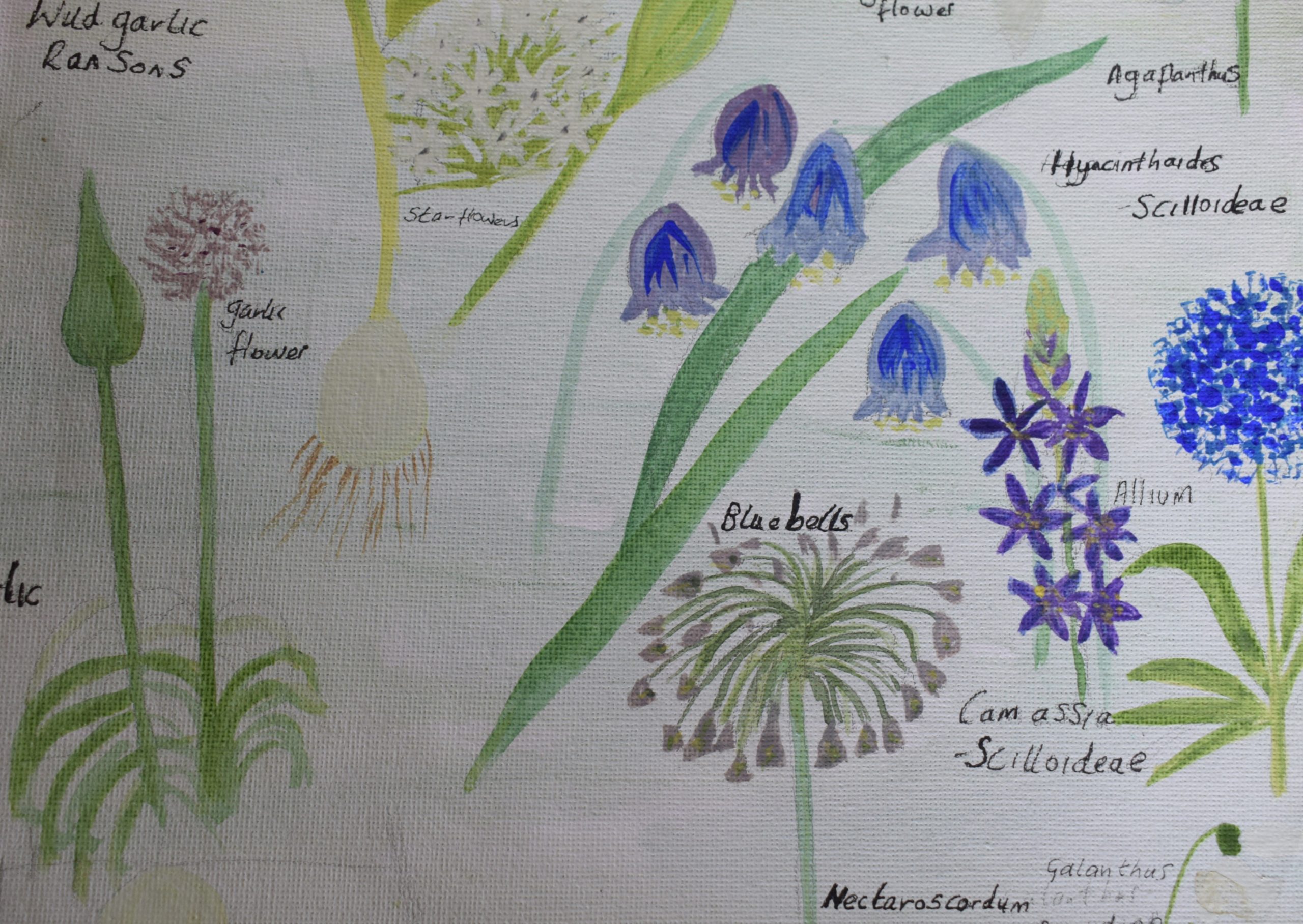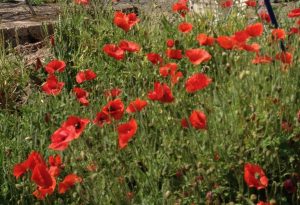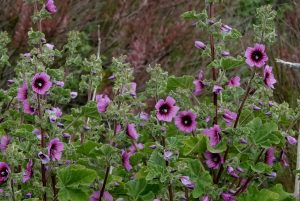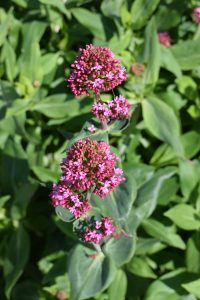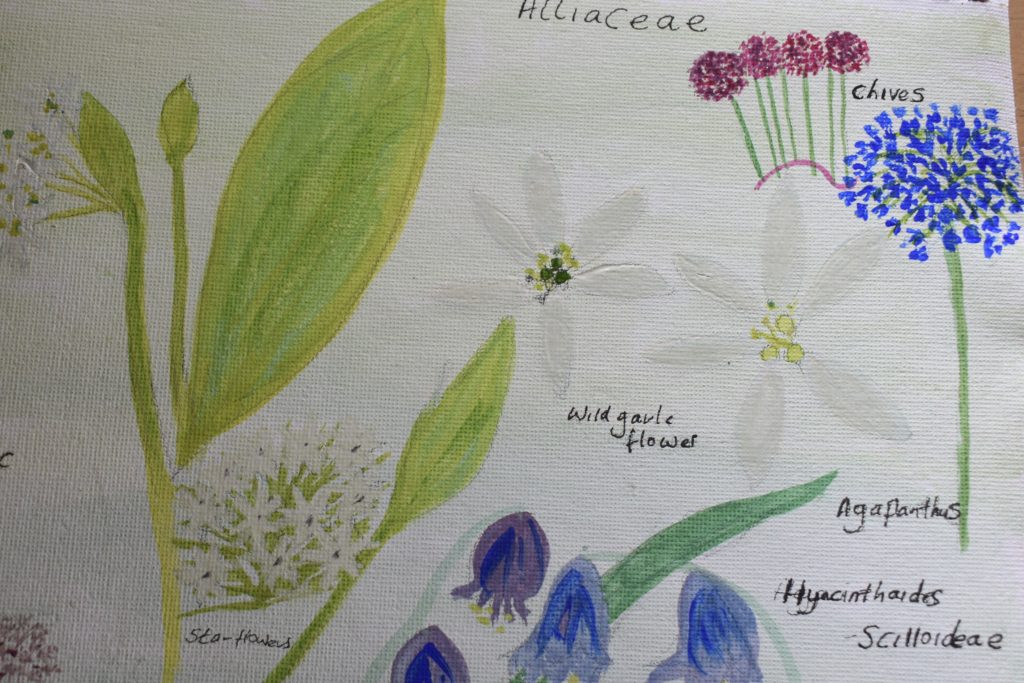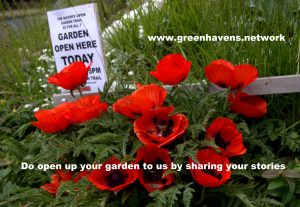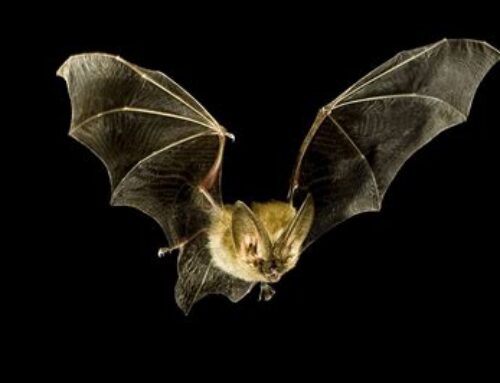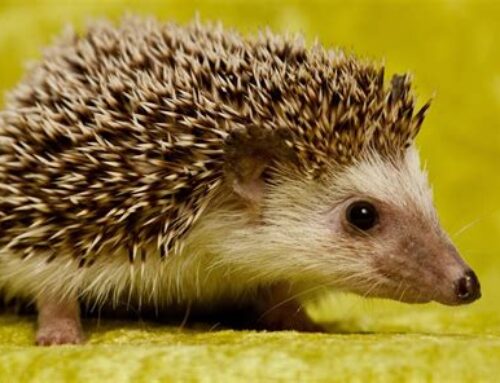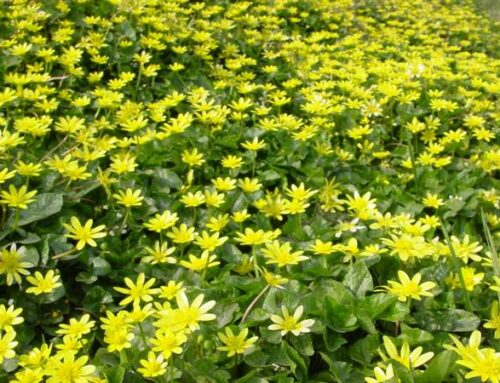“This is a diary blog, a tale about gardening as therapy and becoming part of a green community, learning as we went along, from every weed and wild flower, bird and worm.
In June last year 2019, we moved from Battle to Newhaven. The house we’ve come to is a small 2 bed 1930s Bungalow, humble, cosy, and quaint. The position of the house is glorious with stunning views over Newhaven and the sea. The garden was a blank overgrown canvas for me to get my teeth into! It was a project I really needed. We knew no one in Newhaven, not a soul, this garden has become my therapy my healing, and my passion.
My friend had rented this house before us, that’s how we found it, and we never would’ve moved here if not for that. She wasn’t much of a gardener, (I hope she doesn’t mind me saying that!) But to her credit, she had sown wild poppies seeds before she moved out, so we had a huge display of these ephemeral delicate beauties. They are quite striking against the tall yellow wild flowers which I think are Bristly Ox tongue.
I couldn’t be without my trusty Readers Digest book called “What is that”. It’s a visual dictionary of Britain’s wildlife, plants and flowers and is where I found the probable identity of most wild flowers.
Amongst the wildflowers we have found are Thistle. I’m not too sure which one it is, there are no less than 12 varieties, but knowing its Thistle and is a great pollinator is enough for me! I love the tallness of them and the way they look in the winter.
Controversially there is lots of Red Valerian which insects seem to love, but it can self-seed itself and grow in cracks where the roots become so large, they become very difficult to remove. The National Trust have now banned the planting of Red Valerian I believe and are now trying to reduce its use and spread for this reason. Common Valerian (valeriana officinalis) has been used for medicinal purposes since 924 ad (Reference “Herbs concise guide in colours” Hamlyn)
The Rhizomes and the roots are used for various conditions including insomnia, as sedative and for easing the menopause (as any ladies of a certain age, may be interested to know!)
Then there is the oh so very pretty Mallow in purples, white and pinks. What’s surprising is how some varieties grow into the shape of a small tree with a round form, a bit like a lollipop!
Also making a show in white is a flower from the carrot (umbellifer) family – maybe Cow Parsley or Wild Carrot, again not sure which as they are so similar. However, I am erring on the side of wild carrot again with help from my trusty Readers Digest Book. Ours aren’t as tall as cow parsley, coming up to my knees only. However as I write they are still growing! Maybe it is Cow Parsley after all? Oh the tribulations of wild flower identity! There are over 30 members within the carrot family (Apiaceae) including the much hated, Ground Elder and Giant Hogweed. More useful and loved are Lovage, Wild Parsnip, Parsley, Fennel, Dill, Angelica, Cumin, Coriander, Burnet, Caraway, Angelica and Anise all bearing the gorgeous umbellifer flowers. These are favourites, unsurprisingly with garden designers and cooks!
Interestingly I learned from my wildflower book, that you can see umbellifers flowering in hedgerows right through from April to August. Although the blooms may look very similar, there are in fact three species flowering in succession, making up the display. In chronological order of appearance, these are Cow Parsley, Rough Chervil and up right Hedge Parsley
I find it helps to sketch and make a garden diary. Learning all these Latin names and the horticultural families really isn’t easy. As a budding new jobbing gardener, starting out when I’d just turned 50. I found it really helpful and still do, to make a monthly visual entry, whether it be plant families or plants in season. I can understand now why Botanic art is so integral to horticulture.
Sketching out each part of a plant, the leaves, stem and flowers really helps me to reinforce what I’ve learnt”
Thanks Julia, we really loved hearing all about your garden and the wild flowers there, and we look forward to the next steps in your plans for the garden.
Since this was written, the umbellifer has grown considerably and almost certainly is cow parsley. I am reliably informed that wild carrot grows later in the year, and can be reliably identified once it has finished flowering, by examination of the stem, and the forked leaf bracts. Do take care as this plant is very similar to the highly poisonous hemlock which is seen frequently in this area.
If you would like to share your garden plans and progress with us, we would love to hear from you.
During these lockdown times, we cannot physically visit gardens that would normally be opening for the Open Garden scheme. However the NGS are letting you view some gardens virtually. This can still give you inspiration for your own green spaces, and of course you can give a donation toward the nursing charities that benefit from the scheme, and whose work is even more important at the moment.



